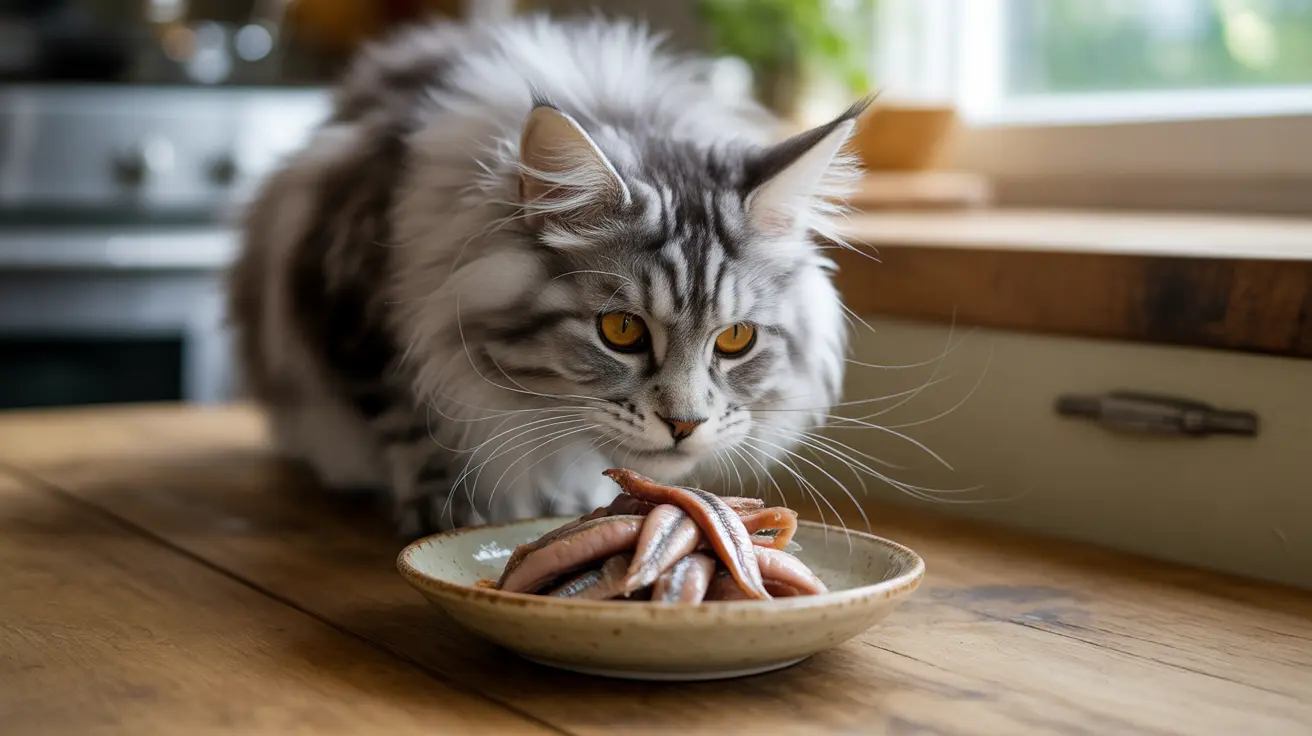For cat owners exploring healthy treat options, anchovies often raise questions. These small, nutrient-rich fish can be a beneficial addition to your cat's diet when properly prepared and served in moderation. Let's explore everything you need to know about feeding anchovies to your feline friend.
As natural carnivores, cats are instinctively drawn to fish, and anchovies can provide numerous health benefits. However, it's crucial to understand the proper ways to serve them and potential risks to ensure your cat's safety and wellbeing.
Nutritional Benefits of Anchovies for Cats
Anchovies pack an impressive nutritional punch that can complement your cat's regular diet. These small fish are rich in high-quality protein, containing approximately 17 grams per 100-gram serving, which supports muscle maintenance and growth in cats.
One of the most significant benefits comes from their omega-3 fatty acid content. These essential fats help maintain:
- Healthy skin and coat
- Joint flexibility
- Heart health
- Strong immune system
- Reduced inflammation
Additionally, anchovies provide vital nutrients including:
- Vitamin B12 for nervous system health
- Vitamin D for bone strength
- Calcium and phosphorus for skeletal health
- Selenium for immune system support
Safe Ways to Serve Anchovies to Cats
When it comes to feeding anchovies to your cat, preparation is key. Here are the safest options:
Fresh Anchovies
- Cook thoroughly to an internal temperature of 145°F
- Avoid seasoning or added oils
- Remove any sharp bones
Canned Anchovies
- Choose varieties packed in water
- Avoid oil-packed or heavily salted options
- Rinse before serving to remove excess sodium
Potential Risks and Precautions
While anchovies can be beneficial, there are several important considerations:
Avoid feeding your cat:
- Raw anchovies (risk of bacteria and parasites)
- Salt-cured anchovies (excessive sodium)
- Oil-packed varieties (can cause digestive issues)
- Seasoned or spiced anchovies (potentially toxic ingredients)
Monitor portion sizes carefully. Even with safe preparations, anchovies should make up no more than 10% of your cat's daily caloric intake.
Serving Guidelines and Frequency
Follow these guidelines for safe anchovy feeding:
- Start with small amounts to test tolerance
- Limit to 1-2 small anchovies per week
- Use as an occasional treat, not a meal replacement
- Always serve alongside regular cat food
- Monitor for any adverse reactions
Frequently Asked Questions
Can cats eat anchovies as part of their regular diet?
No, anchovies should not be part of a cat's regular diet. They should be offered only as occasional treats, making up no more than 10% of your cat's daily food intake.
How do I prepare anchovies safely for my cat as a treat?
Cook fresh anchovies thoroughly without seasonings, or use water-packed canned anchovies after rinsing. Remove any sharp bones and serve in small portions.
What types of anchovies are safe for cats to eat?
Fresh cooked anchovies and water-packed canned anchovies are safest. Avoid raw, salt-cured, oil-packed, or seasoned varieties.
Are cats likely to develop an allergy to anchovies?
While fish allergies in cats are possible, they're relatively uncommon. Introduce anchovies slowly and watch for signs of allergic reactions like itching, vomiting, or diarrhea.
What are the nutritional benefits of feeding anchovies to cats?
Anchovies provide protein, omega-3 fatty acids, vitamin B12, vitamin D, calcium, and selenium, supporting overall health, including muscle strength, coat condition, and immune function.
Remember to always consult with your veterinarian before introducing any new food into your cat's diet, including anchovies. They can provide personalized advice based on your cat's specific health needs and conditions.






